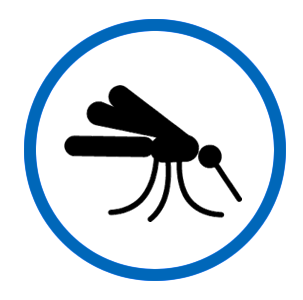Correct and consistent use of ITNs in malarial areas would reduce all-cause child mortality by 20%.1Insecticide-Treated Bed Nets
CDC This is a habitual behavior that needs to be practiced daily.

Insecticide-Treated Net Use
Pregnant women and children sleep under an insecticide-treated net (ITN)
Key Points from Global Research
- In areas with weak distribution systems, making ITNs affordable and regularly available can increase ownership and use.
- Addressing common community perceptions about the health threat posed by malaria and possible actions to mitigate that threat can ensure sustained use of ITNs.
Behavior Profile Sample: Insecticide-Treated Net Use
A Behavior Profile is a summary analysis of each behavior. This sample draws from global evidence and illustrates the result of using the Create Behavior Profiles Tool to analyze factors, supporting actors and strategies and to ensure logical pathways exist between strategies proposed and factors related to the practice of the behavior. This sample may be used as a starting point or reference for creating Behavior Profiles.
| Improve maternal and child survival | |
|
Pregnant women and children sleep under an insecticide-treated net (ITN) Percentage of pregnant women who slept under an insecticide-treated net (ITN) the night before the survey
Percentage of children under age five who slept under an insecticide-treated net (ITN) the night before the survey |
Behavior Analysis |
Strategy | ||
|---|---|---|---|
STEPSWhat steps are needed to practice this behavior?
Click on any box |
FACTORSWhat factors may prevent or support practice of this behavior? These should be analyzed for each country context.StructuralAccessibility: Stock for universal coverage distribution often differs from true need to cover every sleeping space Accessibility: In areas with weak ITN distribution systems, many cannot afford ITNs SocialNorms: Malaria is frequently accepted as normal part of childhood and not believed to be something that can be avoided Gender: Pregnant women and children are often prioritized in cases of insufficient household ITN quantity InternalAttitudes and Beliefs: Many are motivated to use an ITN to avoid other pests (mice, roaches) at night through use of an ITN Attitudes and Beliefs: Many fear possible adverse outcomes due to insecticides used in ITNs Skills: Hanging an ITN can be a challenge due to lack of space in the house, changing sleeping spaces, net design issues or other |
SUPPORTING ACTORS AND ACTIONSWho must support the practice of this behavior?InstitutionalPolicymakers: Introduce local requirements for ITNs (length, shape preference, hanging considerations) in procurement process Managers: Ensure ITN distribution is coupled with counseling and ongoing monitoring of correct and consistent use, especially in non-permanent sleeping spaces (such as kitchens) Logistics Personnel: Use available tools (NetCALC) to ensure sufficient supply of ITNs for mass and continuous distribution HouseholdFamily Members: Obtain, hang and ensure everyone, especially pregnant women and children under five, sleeps under an ITN |
POSSIBLE PROGRAM STRATEGIESHow might we focus our efforts based on this analysis?Enabling EnvironmentFinancing: Monitor and ensure continuous availability of free nets for the most vulnerable Systems, Products and ServicesProducts and Technology: Ensure procurement of ITNs matches housing and population needs Supply Chain: Ensure ITNs are continuously available at antenatal care visits and children under five visits Demand and UseAdvocacy : Use community data on ITN use and malaria incidence to offer communities proof of behavior benefit and to create social accountability for practice of behavior Communication: Use media and one-on-one counseling to emphasize impact of malaria on most vulnerable (pregnant women and young children), efficacy of prevention, safety of ITNs, and better night’s sleep Communication: Use appropriate communication channels, including interpersonal communication at clinics, to reinforce importance of ITNs for most vulnerable and reposition beyond just health benefits of ITN use |
Global Status of Accelerator Behavior
Percentage of pregnant women who slept under an insecticide-treated net (ITN) the night before the survey
Cambodia Malaria Survey, Demographic and Health Survey, Malaria Indicator Survey, Thailand Malaria Survey
Percentage of children under age five who slept under an insecticide-treated net (ITN) the night before the survey
Demographic and Health Survey, Malaria Indicator Survey, Thailand Malaria Survey, The DHS Program Indicator Data API, The Demographic and Health Surveys (DHS) Program
